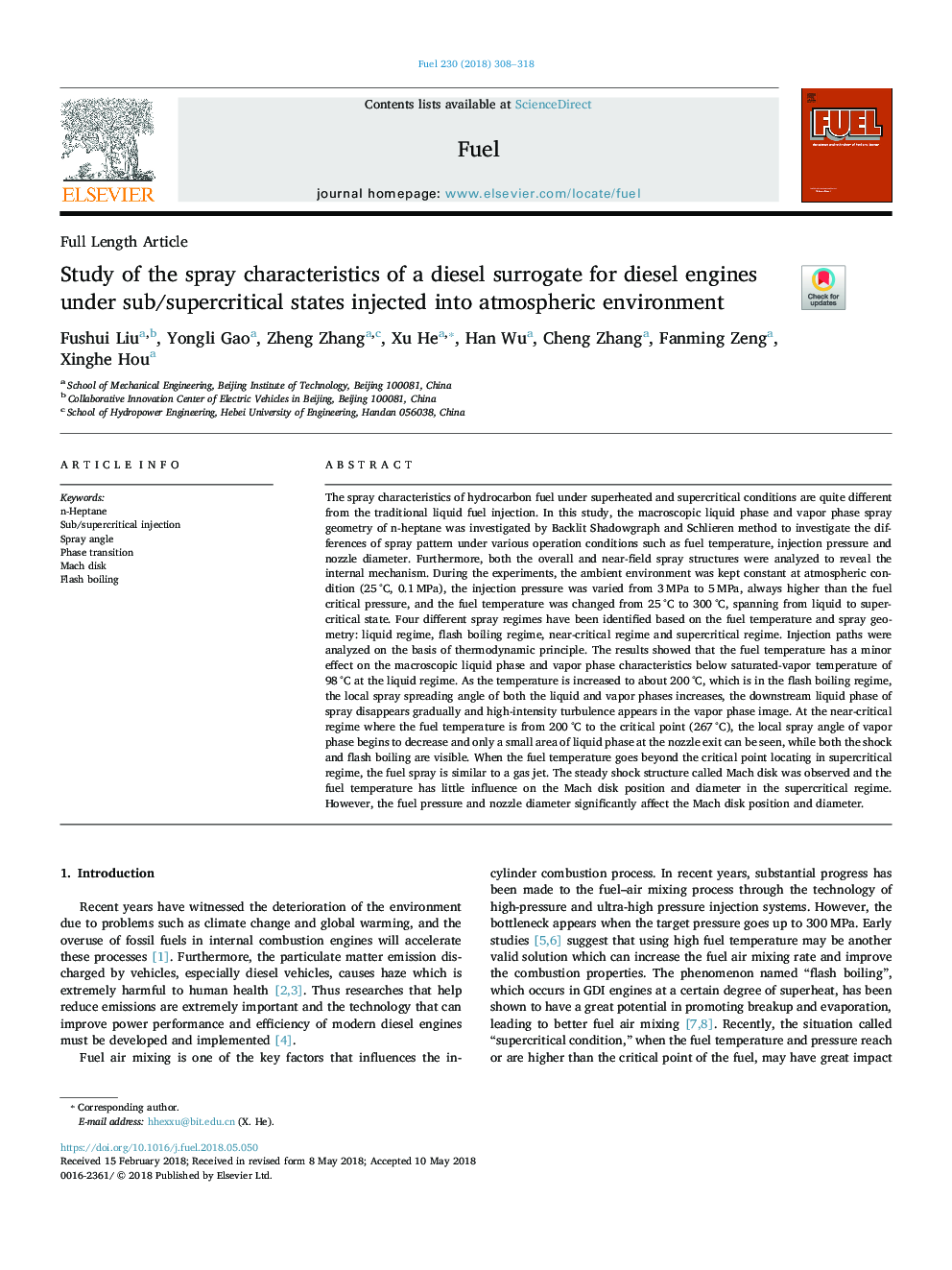| کد مقاله | کد نشریه | سال انتشار | مقاله انگلیسی | نسخه تمام متن |
|---|---|---|---|---|
| 6630637 | 1424934 | 2018 | 11 صفحه PDF | دانلود رایگان |
عنوان انگلیسی مقاله ISI
Study of the spray characteristics of a diesel surrogate for diesel engines under sub/supercritical states injected into atmospheric environment
ترجمه فارسی عنوان
بررسی ویژگی های اسپری یک جایگزین دیزل برای موتورهای دیزلی در حالت های زیر / سوپر بحرانی تزریق شده به محیط اتمسفر
دانلود مقاله + سفارش ترجمه
دانلود مقاله ISI انگلیسی
رایگان برای ایرانیان
کلمات کلیدی
موضوعات مرتبط
مهندسی و علوم پایه
مهندسی شیمی
مهندسی شیمی (عمومی)
چکیده انگلیسی
The spray characteristics of hydrocarbon fuel under superheated and supercritical conditions are quite different from the traditional liquid fuel injection. In this study, the macroscopic liquid phase and vapor phase spray geometry of n-heptane was investigated by Backlit Shadowgraph and Schlieren method to investigate the differences of spray pattern under various operation conditions such as fuel temperature, injection pressure and nozzle diameter. Furthermore, both the overall and near-field spray structures were analyzed to reveal the internal mechanism. During the experiments, the ambient environment was kept constant at atmospheric condition (25â¯Â°C, 0.1â¯MPa), the injection pressure was varied from 3â¯MPa to 5â¯MPa, always higher than the fuel critical pressure, and the fuel temperature was changed from 25â¯Â°C to 300â¯Â°C, spanning from liquid to supercritical state. Four different spray regimes have been identified based on the fuel temperature and spray geometry: liquid regime, flash boiling regime, near-critical regime and supercritical regime. Injection paths were analyzed on the basis of thermodynamic principle. The results showed that the fuel temperature has a minor effect on the macroscopic liquid phase and vapor phase characteristics below saturated-vapor temperature of 98â¯Â°C at the liquid regime. As the temperature is increased to about 200â¯Â°C, which is in the flash boiling regime, the local spray spreading angle of both the liquid and vapor phases increases, the downstream liquid phase of spray disappears gradually and high-intensity turbulence appears in the vapor phase image. At the near-critical regime where the fuel temperature is from 200â¯Â°C to the critical point (267â¯Â°C), the local spray angle of vapor phase begins to decrease and only a small area of liquid phase at the nozzle exit can be seen, while both the shock and flash boiling are visible. When the fuel temperature goes beyond the critical point locating in supercritical regime, the fuel spray is similar to a gas jet. The steady shock structure called Mach disk was observed and the fuel temperature has little influence on the Mach disk position and diameter in the supercritical regime. However, the fuel pressure and nozzle diameter significantly affect the Mach disk position and diameter.
ناشر
Database: Elsevier - ScienceDirect (ساینس دایرکت)
Journal: Fuel - Volume 230, 15 October 2018, Pages 308-318
Journal: Fuel - Volume 230, 15 October 2018, Pages 308-318
نویسندگان
Fushui Liu, Yongli Gao, Zheng Zhang, Xu He, Han Wu, Cheng Zhang, Fanming Zeng, Xinghe Hou,
